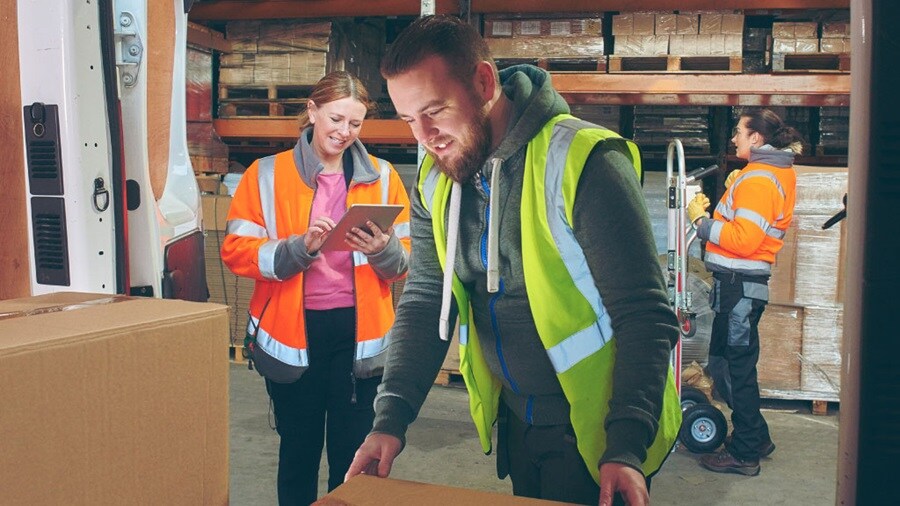Think of the last thing you bought: Did you buy it on a website, in app or in-store? Was it delivered or did you pick it up? Think of the last time you contacted customer services: Was it via email, social media or the phone?
The ‘typical’ customer journey no longer exists in 2024. Customers expect to engage with brands in the way that’s most convenient for them, as part of an omnichannel experience.

The evolution of customer demand
A transformation has happened in the retail landscape. Technological advancements make it possible to offer joined-up, personalised experiences at every touchpoint across the customer journey. Take retail brand H&M, for example.
If you buy a jumper in store, then you receive a notification on their app alerting you to complementary outfits based on your recent purchase. And it’s effective for driving sales: 51% of European consumers say they’ll become a repeat buyer after a personalised experience.
The biggest brands with the deepest pockets already offer a seamless omnichannel experience and are constantly refining and evolving the way they serve their customers. This has a domino effect for the entire market – ‘if this brand can do it, why can’t this one?’. And it’s very easy to shop elsewhere if you don’t meet expectations. So, what does this mean for your brand? Well, a seamless omnichannel experience is the North Star, and it’s a brave brand that doesn’t aim for it. And where there’s an omnichannel experience, you need a solid omnichannel fulfilment strategy underpinning it.

Key challenges in meeting customer expectations
Meeting changing customer expectations requires brands to re-evaluate and redesign their operational models — significant challenges for those with rigid structures or legacy systems.
Visibility across channels is paramount. Effective omnichannel requires sophisticated technological solutions that can integrate with existing systems to connect data across multiple channels and supply chains. This can require new talent to implement these systems, and significant CapEx investment to get started.
However, once the right systems are in place, brands can collect, analyse and leverage vast amounts of customer data, enabling them to adapt to new demands with a deeper understanding of customer behaviour, preferences and trends.
The rise of AI has added even more opportunities for fulfilment strategies. According to a McKinsey & Co report, early adopters of AI-enabled supply chain management can improve logistics costs by 15%, inventory levels by 35% and service levels by 65%, compared with slower-moving competitors. By harnessing advanced technology like AI in this way, brands develop an optimum, insight-led omnichannel fulfilment strategy capable of ensuring a seamless personalised experience across all touchpoints.

The importance of agility
Omnichannel, of course, is just a name. No customer is screaming ‘I need an omnichannel experience’. What they do want, however, is the flexibility, speed and convenience the approach delivers. Which is why the fulfilment element is so important to the overall strategy – to manage orders and returns, at speed, from multiple sales channels via multiple fulfilment locations. By staying agile, businesses can proactively respond to spikes in demand or to bespoke requirements. This dynamic and responsive approach ensures products are delivered – improving customer satisfaction and securing a competitive edge.

Fenty Beauty's Super Bowl success
A perfect example of brands leveraging channel proliferation to maximise their reach is the subtle, yet iconic, promotion of the cosmetic brand Fenty Beauty during the 2023 Super Bowl halftime show.
Rihanna capitalised on a chance to showcase her brand by pulling out a case of Fenty Beauty Invisimatte Instant Setting + Blotting Powder to touch up her face mid-performance. These savvy marketing tactics used TV to blow-up social media engagement and increase sales across multiple touchpoints — both on site, in app and in-store.
The brand needed a robust omnichannel fulfilment approach to service this demand. Following the performance, Google searches for “Fenty Beauty” increased by 883% and the brand’s media value by £4.5 million.

Strategies for future-proofing omnichannel fulfilment
To overcome challenges, partnership is everything. At Maersk, our global team of logistics experts will provide customised solutions tailored to suit your commercial and operational environment.
We’ll help to connect data from your front-end retail and e-commerce stores to your back-end logistics and fulfilment — enabling you to meet customer demands and foster opportunities for continued growth.
Maersk Omnichannel Fulfilment offers a variety of services such as air, inland freight, customs and an extensive network of warehouses and fulfilment centres. Our services help streamline your supply chain and optimise your offerings to make it simple for you to deliver to your customers across all channels, online and offline.
Find out more on the other biggest trends in omnichannel logistics in our eBook. And, if you want to see Maersk's approach to omnichannel logistics.
无论您需要什么,我们都可以随时为您提供帮助
I agree to receive logistics related news and marketing updates by email, phone, messaging services (e.g. WhatsApp) and other digital platforms, including but not limited to social media (e.g., LinkedIn) from A. P. Moller-Maersk and its affiliated companies (see latest company overview). I understand that I can opt out of such Maersk communications at any time by clicking the unsubscribe link. To see how we use your personal data, please read our Privacy Notification.
By completing this form, you confirm that you agree to the use of your personal data by Maersk as described in our Privacy Notification.
